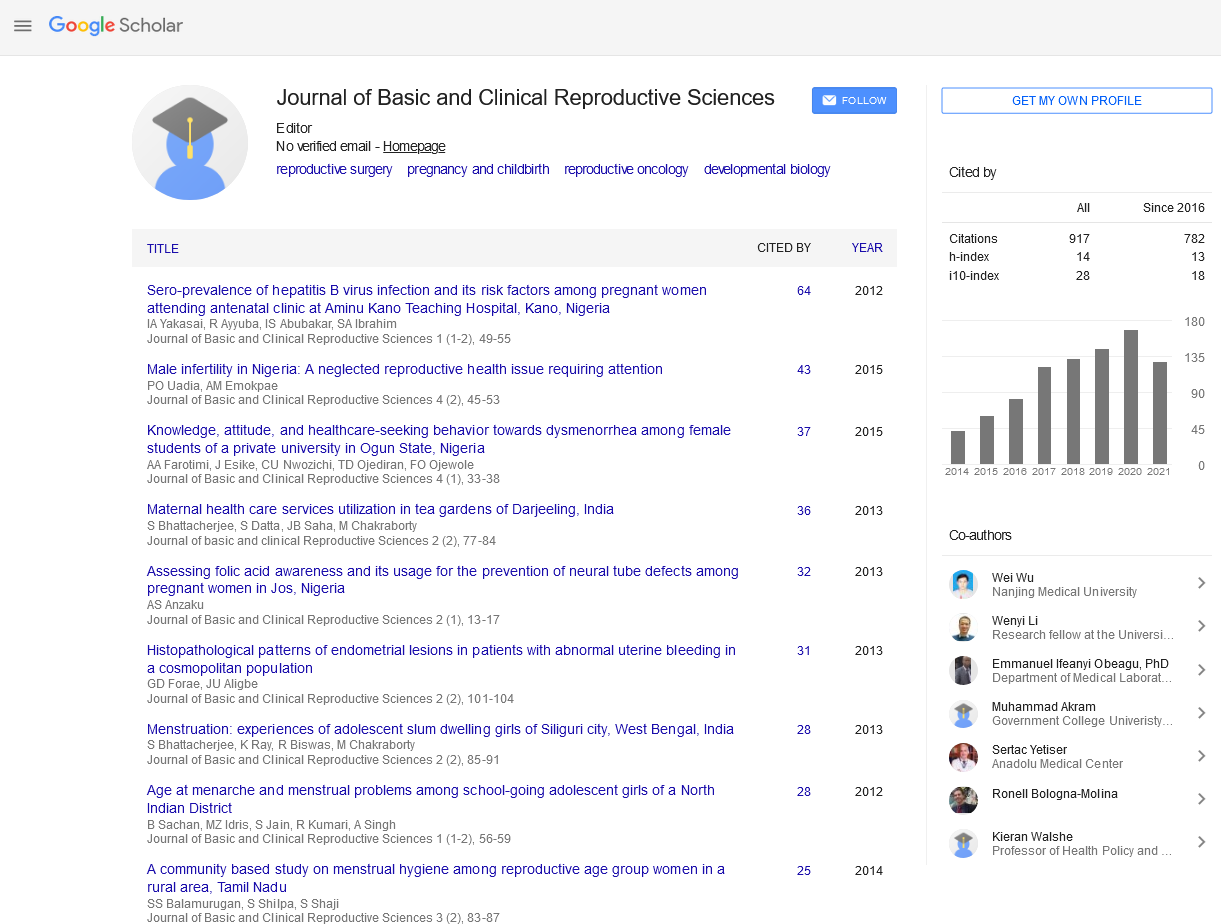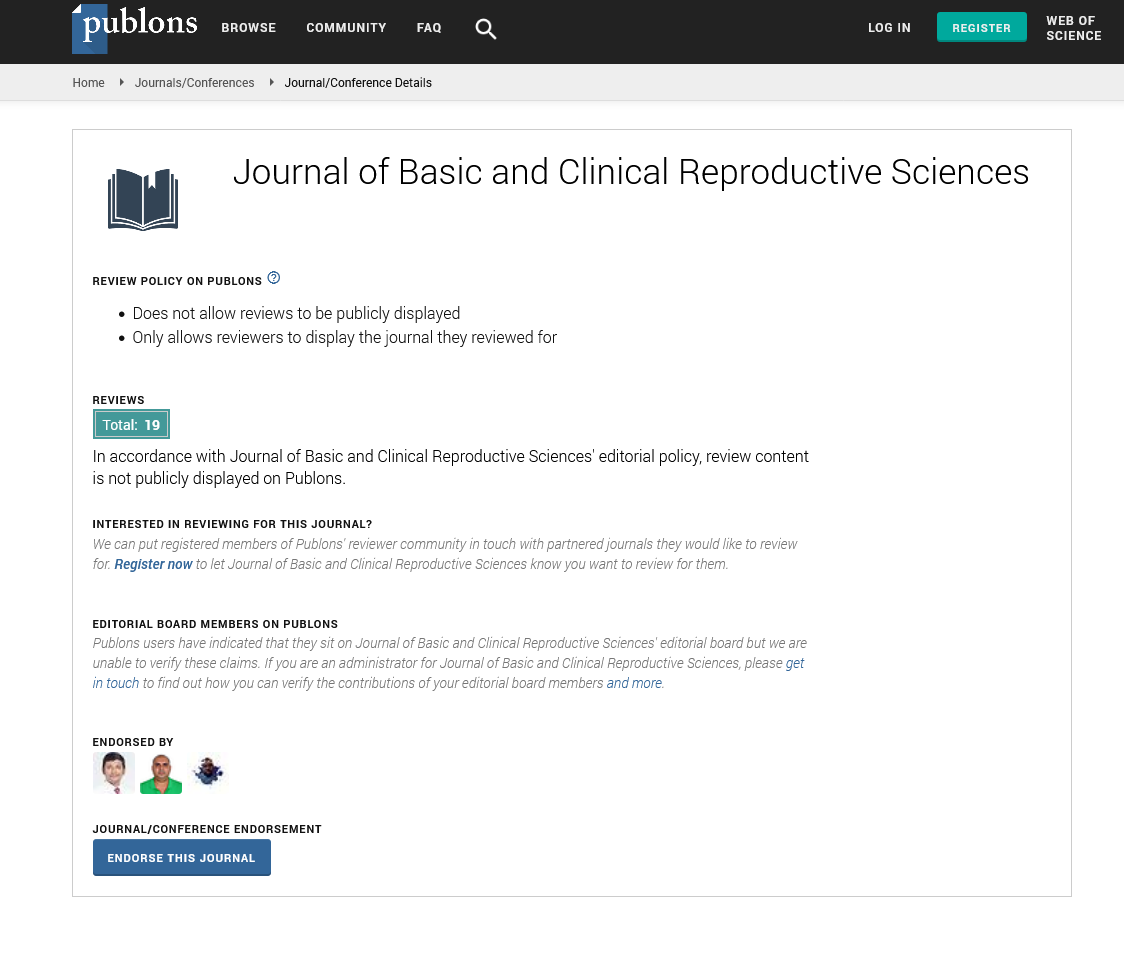Perspective - Journal of Basic and Clinical Reproductive Sciences (2023) Volume 12, Issue 1
Advances in Reproductive Endocrinology: Understanding Hormonal Regulation of Reproduction
Received: 10-Jan-2023, Manuscript No. JBCRS-23-96185; Editor assigned: 12-Jan-2023, Pre QC No. JBCRS-23-96185; Accepted Date: Dec 10, 2023 ; Reviewed: 23-Jan-2023 QC No. JBCRS-23-96185; Revised: 03-Feb-2023, Manuscript No. JBCRS-23-96185; Published: 10-Dec-0030
This open-access article is distributed under the terms of the Creative Commons Attribution Non-Commercial License (CC BY-NC) (http://creativecommons.org/licenses/by-nc/4.0/), which permits reuse, distribution and reproduction of the article, provided that the original work is properly cited and the reuse is restricted to noncommercial purposes. For commercial reuse, contact reprints@pulsus.com
Description
Reproductive endocrinology is a rapidly evolving field that focuses on the intricate hormonal regulation of the reproductive system in both males and females. Hormones play an important role in controlling various aspects of reproduction, including the development and function of the gonads, menstrual cycle in females, spermatogenesis in males, and the maintenance of pregnancy. Recent advances in our understanding of reproductive endocrinology have shed light on the complex interplay between hormones, signaling pathways, and reproductive outcomes. In this manuscript, we will review the latest research findings and insights into reproductive endocrinology, highlighting the key hormonal mechanisms that govern reproduction.
The menstrual cycle is a complex process that is precisely regulated by hormonal signals. In females, the hypothalamus, pituitary gland, and ovaries work in harmony to control the menstrual cycle. The hypothalamus releases Gonadotropin-Releasing Hormone (GnRH), which stimulates the anterior pituitary gland to produce Luteinizing Hormone (LH) and Follicle-Stimulating Hormone (FSH). LH and FSH then act on the ovaries to stimulate follicular development and ovulation. After ovulation, the corpus luteum forms and produces progesterone, a hormone essential for the preparation of the endometrium for implantation. If fertilization does not occur, the corpus luteum regresses, leading to a decline in progesterone levels, which triggers menstruation.
Recent research has provided novel insights into the hormonal regulation of the menstrual cycle. For example, it has been discovered that kisspeptin, a neuropeptide produced by neurons in the hypothalamus, plays a critical role in regulating GnRH secretion. Kisspeptin acts as a master regulator of reproductive function and is essential for the onset of puberty, maintenance of normal menstrual cycles, and ovulation. Dysregulation of kisspeptin signaling has been implicated in various reproductive disorders, such as Polycystic Ovary Syndrome (PCOS) and hypothalamic amenorrhea.
Spermatogenesis, the process of sperm production in males, is tightly regulated by hormonal signals as well. The hypothalamus releases GnRH, which stimulates the pituitary gland to produce LH and FSH. LH acts on Leydig cells in the testes to stimulate the production of testosterone, a key hormone for spermatogenesis. FSH, on the other hand, acts on Sertoli cells in the testes, which are crucial for supporting the development and maturation of sperm cells.
Recent advances in our understanding of hormonal regulation of spermatogenesis have revealed the roles of several novel hormones and signaling pathways. For instance, Insulin-Like Peptide 3 (INSL3), a hormone produced by Leydig cells, has been shown to play a crucial role in the differentiation and maturation of Leydig cells, which are responsible for producing testosterone. Dysregulation of INSL3 has been linked to male infertility and testicular dysfunction. In addition, recent studies have identified the roles of various signaling pathways, such as the Wnt and Notch pathways, in the regulation of spermatogenesis, offering potential therapeutic targets for male reproductive disorders. Hormonal regulation is also critical for the establishment and maintenance of pregnancy. After fertilization, the fertilized egg implants into the endometrium of the uterus, and hormonal signals are crucial for supporting the implantation and subsequent pregnancy.


